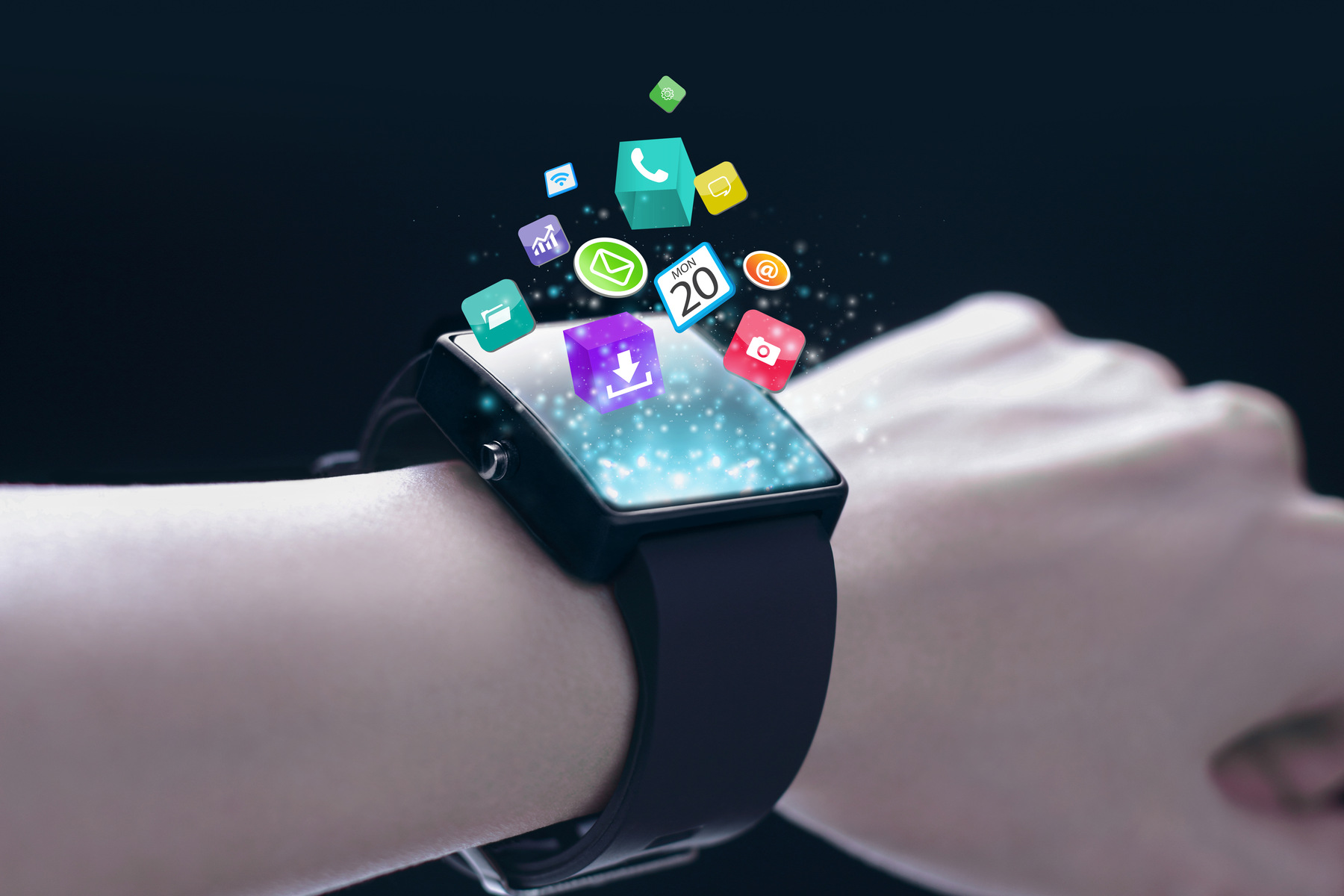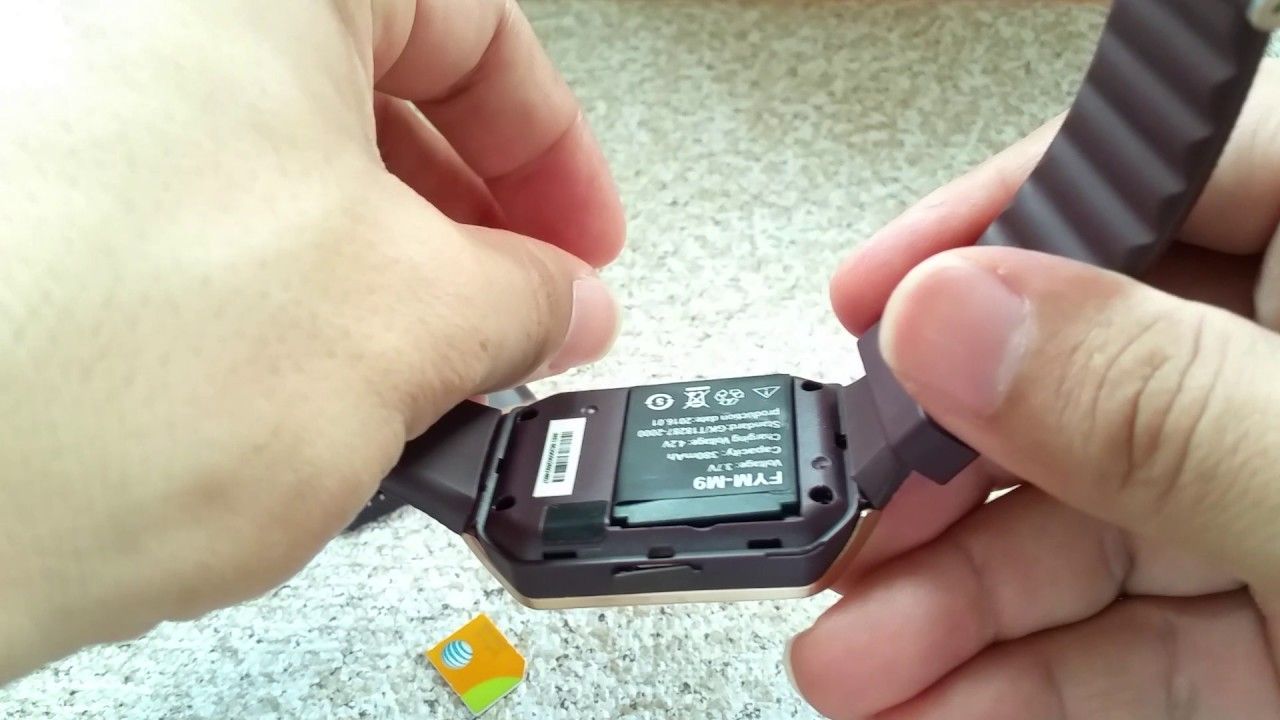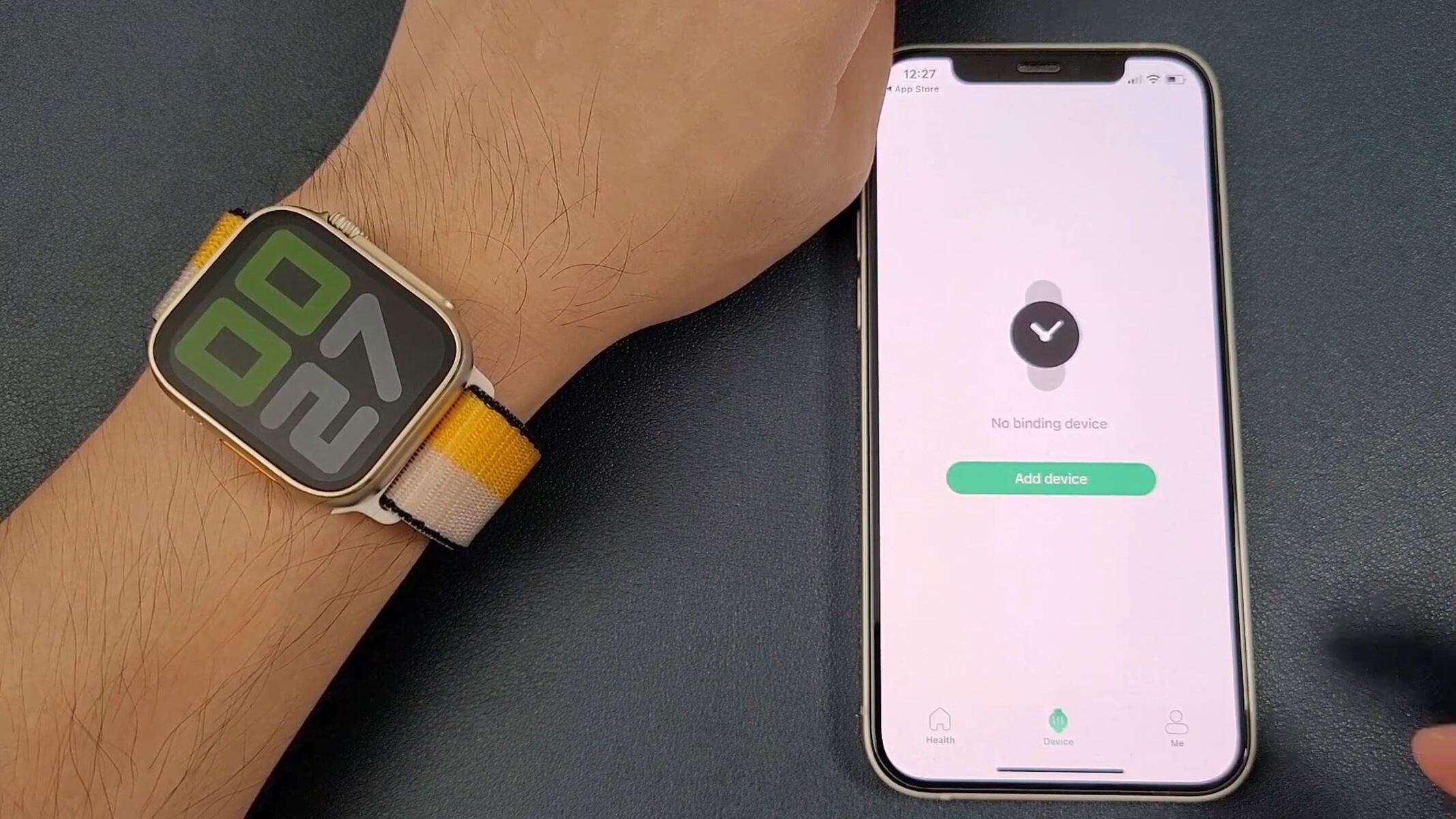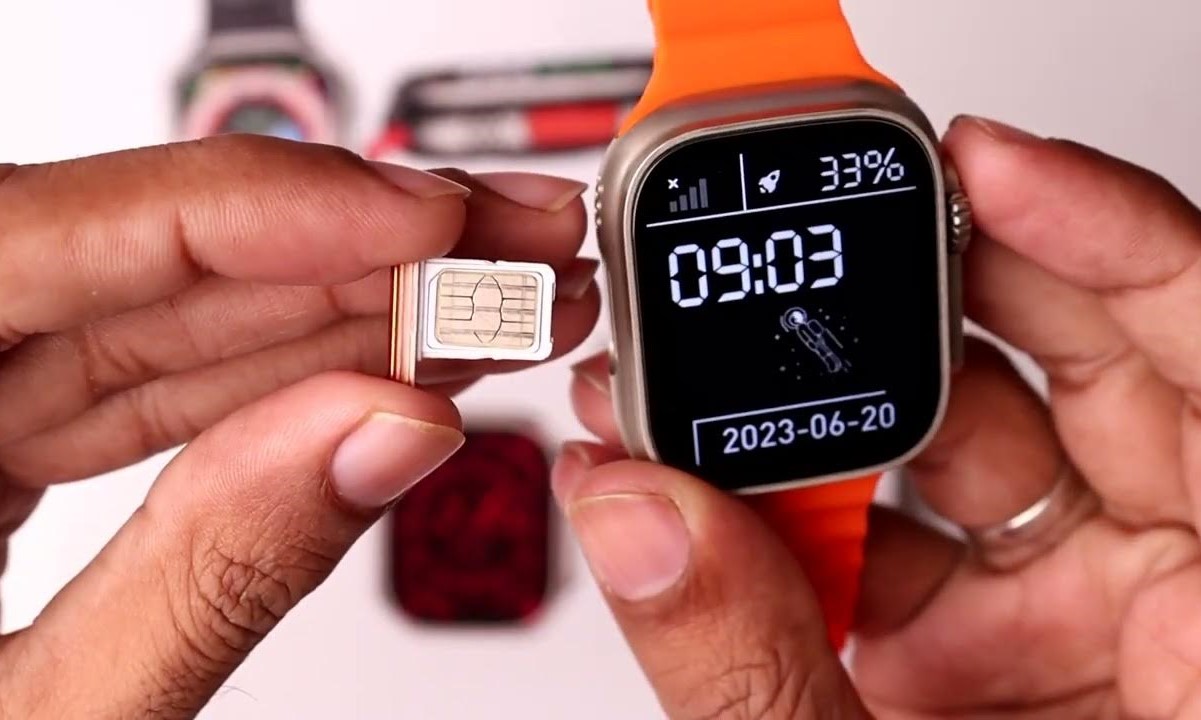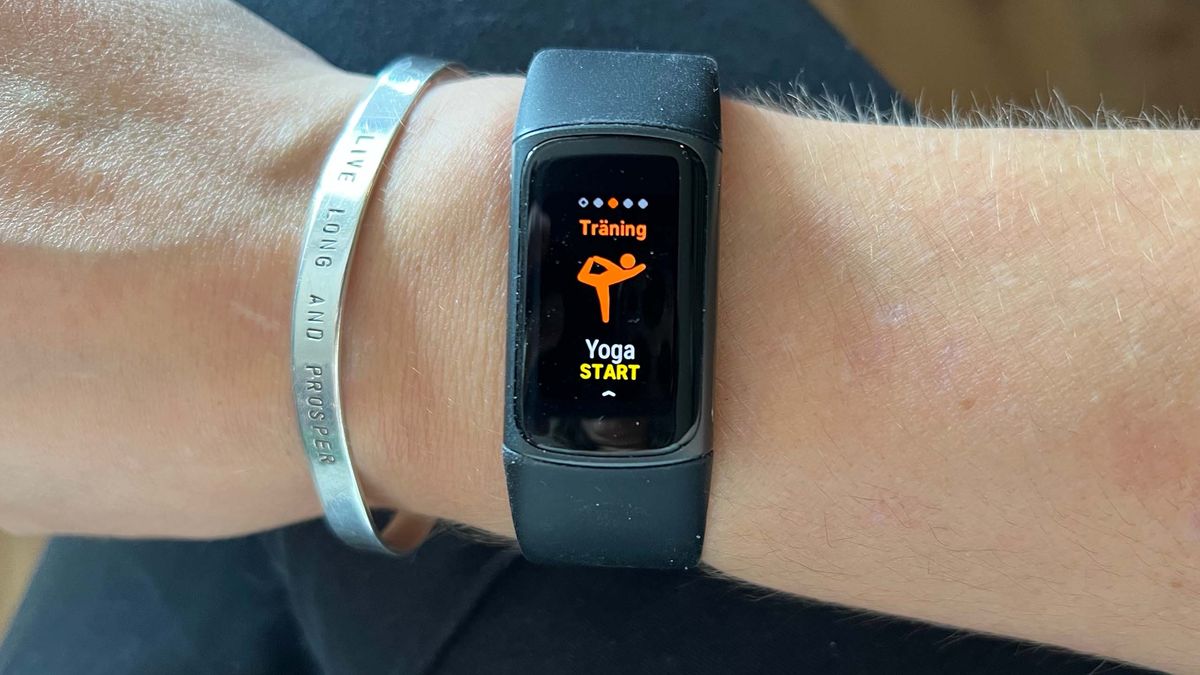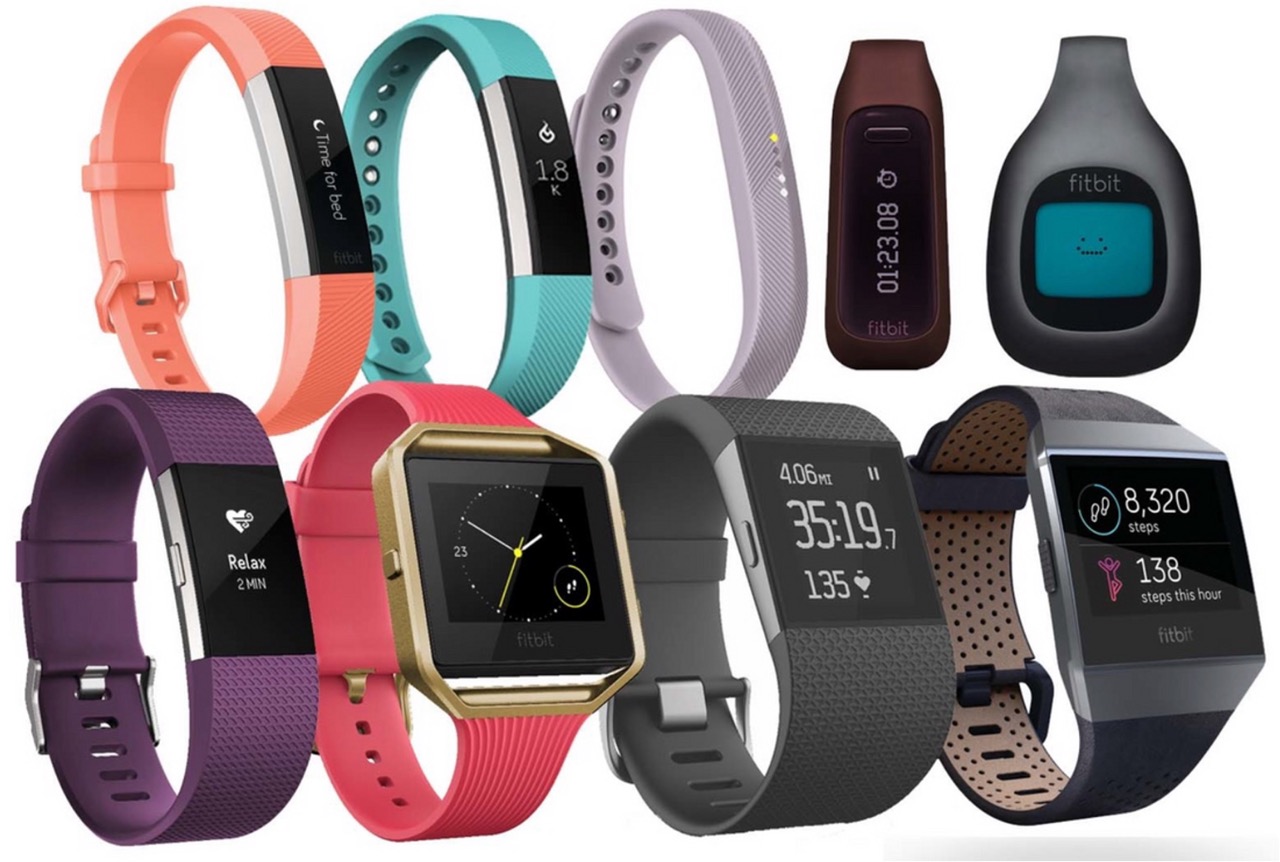What are Smartwatches?
Smartwatches are wearable devices that have evolved from simple timekeeping accessories to multifunctional gadgets. They are designed to be worn on the wrist and offer a wide range of features beyond traditional timekeeping. These devices often incorporate touchscreen displays, wireless connectivity, and various sensors to provide users with convenient access to information and services right from their wrists.
Evolution of Smartwatches
The concept of a smartwatch dates back to the early 20th century, but it wasn't until the 2010s that the modern smartwatch truly began to take shape. Companies like Apple, Samsung, and Fitbit played pivotal roles in popularizing and advancing the technology. The evolution of smartwatches has seen them transform from basic notification devices to sophisticated tools that can track fitness, make calls, send messages, and even monitor health metrics.
Features and Functions
Smartwatches offer an array of features and functions that cater to various needs. They can display notifications from a paired smartphone, track physical activities, monitor heart rate, and even provide navigation assistance. Many smartwatches also support voice commands, enabling users to interact with their devices hands-free. Additionally, some models are equipped with contactless payment capabilities, allowing users to make purchases with a simple tap of their wrist.
Convenience and Accessibility
One of the primary appeals of smartwatches is their convenience. By having essential information and services accessible on the wrist, users can stay connected and informed without constantly reaching for their smartphones. Whether it's checking notifications, controlling music playback, or tracking fitness metrics during a workout, smartwatches provide a streamlined and accessible user experience.
Integration with Smartphones
Smartwatches are designed to complement smartphones, often serving as an extension of the user's mobile device. They can mirror smartphone notifications, allowing users to stay updated without having to take out their phones. Additionally, smartwatches can control smartphone functions, such as music playback and camera shutter release, further enhancing the overall user experience.
Fashion and Personalization
In addition to their functionality, smartwatches also offer a degree of personalization and style. With customizable watch faces, interchangeable bands, and various design options, users can express their individuality through their smartwatch. This fusion of technology and fashion has contributed to the widespread adoption of smartwatches as versatile accessories.
Smartwatches have become integral to the modern lifestyle, offering a blend of practicality, style, and functionality. As these devices continue to evolve, they are likely to further integrate into daily routines, providing users with even more seamless and personalized experiences.
The Evolution of Smartwatches
The concept of smartwatches has undergone a remarkable evolution, transitioning from simple timekeeping devices to sophisticated wearable computers. The journey of smartwatches can be traced back to early attempts to integrate technology with traditional timepieces, eventually leading to the development of the modern smartwatch as we know it today.
In the late 20th century, the idea of a wrist-worn computer captured the imagination of tech enthusiasts and futurists. Early prototypes and concepts laid the groundwork for the integration of computing capabilities into wearable form factors. However, it wasn’t until the 2010s that significant strides were made in bringing the smartwatch to the mainstream market.
Key players in the technology industry, including Apple, Samsung, and Fitbit, played pivotal roles in driving the evolution of smartwatches. These companies introduced innovative features and designs that transformed smartwatches from novelty gadgets to essential accessories. The integration of high-resolution touchscreens, advanced sensors, and seamless connectivity with smartphones propelled smartwatches into the spotlight.
As the technology matured, smartwatches evolved beyond mere companions to smartphones. They became standalone devices with robust capabilities, including fitness tracking, health monitoring, and access to a wide range of apps and services. The evolution of smartwatches also saw improvements in battery life, processing power, and overall user experience, making them indispensable tools for many individuals.
With each iteration, smartwatches have become more refined, compact, and stylish, appealing to a broader audience. The focus on design and aesthetics has transformed smartwatches into fashion statements, blending seamlessly with everyday attire while offering advanced functionality. The availability of customizable watch faces, interchangeable bands, and premium materials has further elevated the appeal of smartwatches as versatile and personalized accessories.
Looking ahead, the evolution of smartwatches is poised to continue, driven by advancements in areas such as health monitoring, augmented reality, and seamless integration with the Internet of Things (IoT). As smartwatches become more capable and interconnected, they are expected to play increasingly integral roles in shaping the way we interact with technology in our daily lives.
Features and Functions of Smartwatches
Smartwatches boast an impressive array of features and functions that extend far beyond traditional timekeeping. These versatile devices are designed to seamlessly integrate into daily life, offering convenience, connectivity, and advanced capabilities right on the wrist.
Notifications and Communication
One of the primary functions of smartwatches is to provide instant access to notifications and communication tools. Users can receive and respond to text messages, emails, and social media alerts directly from their wrists, eliminating the need to constantly check their smartphones. This streamlined approach to staying connected ensures that important information is readily accessible at all times.
Health and Fitness Tracking
Many smartwatches are equipped with sensors that enable comprehensive health and fitness tracking. These devices can monitor heart rate, track physical activity, and provide insights into sleep patterns. By leveraging advanced sensors and algorithms, smartwatches empower users to take charge of their well-being and make informed decisions about their health and fitness routines.
Navigation and Location Services
Smartwatches often feature built-in GPS functionality, allowing users to access navigation assistance directly from their wrists. Whether it’s getting turn-by-turn directions while walking or tracking outdoor workouts with precision, the integration of location services enhances the utility of smartwatches for active individuals and travelers.
Voice Commands and Virtual Assistants
Many modern smartwatches support voice commands, enabling users to interact with their devices using natural language. Virtual assistants such as Siri, Google Assistant, and Alexa can be accessed directly from smartwatches, allowing users to perform tasks, set reminders, and get answers to queries without needing to reach for their smartphones.
Mobile Payments and Contactless Transactions
Smartwatches equipped with NFC (Near Field Communication) technology enable users to make secure and convenient contactless payments. By simply tapping their wrists at compatible payment terminals, users can complete transactions without the need for physical cards or smartphones, adding a layer of convenience to their daily routines.
App Ecosystem and Customization
Smartwatches support a wide range of apps that cater to diverse interests and needs. From productivity tools and weather forecasts to music streaming and fitness coaching, the app ecosystem for smartwatches continues to expand, offering users the ability to personalize their devices and tailor them to their specific preferences.
These features and functions collectively position smartwatches as versatile and indispensable tools that seamlessly integrate into modern lifestyles, offering a blend of connectivity, productivity, and personalization.
How to Choose the Right Smartwatch for You
With a wide variety of smartwatches available in the market, selecting the right one can be a daunting task. However, considering several key factors can help you make an informed decision that aligns with your preferences and requirements.
Compatibility with Your Smartphone
When choosing a smartwatch, it’s crucial to ensure that it is compatible with your smartphone’s operating system. For instance, if you use an iPhone, you’ll want to look for a smartwatch that is designed to work seamlessly with iOS. Similarly, if you’re an Android user, opting for a smartwatch that is compatible with the Android platform will ensure optimal integration and functionality.
Design and Style
Smartwatches are available in a wide range of designs, from sleek and modern to sporty and rugged. Consider your personal style preferences and the occasions during which you intend to wear the smartwatch. Whether you prioritize a classic timepiece aesthetic or a more fitness-oriented look, selecting a design that resonates with your taste and lifestyle is essential.
Display and Interface
Pay attention to the display type and interface of the smartwatch. Factors such as display size, resolution, and touchscreen responsiveness can significantly impact the user experience. Additionally, consider whether you prefer a traditional circular watch face or a square-shaped display, as well as the ease of navigation through the interface.
Health and Fitness Features
If you prioritize health and fitness tracking, look for smartwatches that offer comprehensive features such as heart rate monitoring, workout tracking, and sleep analysis. Some models are specifically tailored for fitness enthusiasts, offering specialized metrics and coaching features to support various physical activities.
Battery Life and Charging
Assess the battery life and charging method of the smartwatch. Longer battery life reduces the frequency of recharging, ensuring that the device remains operational for extended periods. Additionally, consider the convenience of the charging mechanism, whether it uses a proprietary dock, magnetic connector, or wireless charging.
App Compatibility and Ecosystem
Explore the app compatibility and ecosystem of the smartwatch. Assess whether the device supports the apps and services that are integral to your daily routine, such as messaging platforms, fitness apps, and productivity tools. A robust app ecosystem enhances the versatility of the smartwatch, allowing you to customize its functionality to suit your needs.
By carefully evaluating these factors and considering your individual preferences, you can select a smartwatch that seamlessly integrates into your lifestyle, providing a blend of style, functionality, and convenience.
Setting Up and Using Your Smartwatch
Setting up and using a smartwatch involves a series of straightforward steps that enable you to personalize the device and maximize its functionality. Whether you’re unboxing a brand-new smartwatch or setting up a replacement device, the process typically involves several key stages to ensure a seamless and tailored user experience.
Pairing with Your Smartphone
The initial step in setting up a smartwatch is often pairing it with your smartphone. This typically involves downloading the companion app for the smartwatch on your smartphone and following the on-screen instructions to establish a Bluetooth connection between the devices. Once paired, the smartwatch can access notifications, data, and functionalities from the smartphone, enabling a cohesive user experience.
Customizing Watch Faces and Settings
After pairing, you can customize the watch face and settings of the smartwatch to align with your preferences. Many smartwatches offer a variety of preloaded watch faces, allowing you to choose a design that suits your style. Additionally, you can adjust settings such as display brightness, notification preferences, and app shortcuts to personalize the smartwatch to your liking.
Exploring Basic Functions
Upon setup, familiarize yourself with the basic functions of the smartwatch. This includes navigating the interface, accessing notifications, and utilizing features such as music playback control, weather updates, and fitness tracking. Understanding the core functions of the smartwatch lays the foundation for integrating it into your daily routine seamlessly.
Installing and Managing Apps
Depending on the smartwatch model, you may have the option to install additional apps to expand its capabilities. Explore the app store or marketplace associated with your smartwatch to discover and install apps that cater to your interests, whether they are related to productivity, fitness, communication, or entertainment. Managing installed apps allows you to tailor the smartwatch to your specific needs.
Learning Advanced Features
As you become accustomed to the basic functions, delve into the advanced features of the smartwatch. This may include utilizing voice commands, setting up voice assistants, exploring health and fitness metrics in greater detail, and leveraging additional functionalities such as mobile payments or navigation assistance. Understanding the full scope of the smartwatch’s capabilities enhances its utility in various scenarios.
Regular Maintenance and Updates
Ensure that your smartwatch remains updated with the latest software and firmware releases. Regularly check for updates through the companion app or system settings to benefit from performance improvements, new features, and security enhancements. Additionally, maintain the physical condition of the smartwatch by cleaning it and ensuring proper care of the display and components.
By following these steps and familiarizing yourself with the setup and usage of your smartwatch, you can harness the full potential of the device, integrating it seamlessly into your daily life and routines.
Smartwatch Compatibility with Devices
Smartwatch compatibility with various devices is a critical consideration when choosing a wearable device, as seamless integration enhances the overall user experience. Understanding the compatibility of smartwatches with smartphones, operating systems, and other devices is essential for ensuring optimal functionality and connectivity.
Smartwatch and Smartphone Integration
Smartwatches are designed to complement smartphones, functioning as extensions of their paired devices. Compatibility between a smartwatch and a smartphone is typically based on the operating system, with most smartwatches being optimized for either iOS or Android. For example, Apple Watch is tailored for seamless integration with iPhones, leveraging the iOS ecosystem to deliver a cohesive user experience. Similarly, smartwatches running Wear OS by Google are designed to work seamlessly with Android smartphones, offering deep integration and compatibility.
Operating System Compatibility
When assessing smartwatch compatibility, it’s crucial to consider the operating system of the paired smartphone. Smartwatches running watchOS, the operating system powering Apple Watch, are exclusively compatible with iPhones running iOS. On the other hand, smartwatches powered by Wear OS are designed to integrate seamlessly with Android smartphones, providing access to a wide range of features and functionalities. Understanding the compatibility between the smartwatch’s operating system and the paired smartphone’s operating system is essential for ensuring a smooth user experience.
Device-Specific Features and Functions
Smartwatch compatibility extends beyond smartphones, encompassing a range of devices and services. For example, some smartwatches offer specialized compatibility with fitness equipment, allowing users to sync workout data seamlessly. Others may integrate with smart home devices, enabling users to control connected appliances and systems directly from their wrists. Assessing the compatibility of smartwatches with additional devices and services can unlock enhanced functionality and convenience.
Cross-Platform Compatibility
As the smartwatch landscape evolves, efforts to enhance cross-platform compatibility have become increasingly prevalent. Some smartwatches offer limited functionality when paired with devices running a different operating system, allowing users to access essential features such as notifications and basic functionalities. While cross-platform compatibility may not offer the full suite of features available with native pairings, it provides flexibility for users who may switch between different smartphone ecosystems.
Future-Proofing and Updates
When evaluating smartwatch compatibility, consider the device’s future-proofing capabilities and its ability to receive updates. Manufacturers often release software updates to enhance compatibility with new devices, improve performance, and introduce new features. Ensuring that the smartwatch receives regular updates and remains compatible with the latest devices and services is essential for longevity and continued utility.
By assessing smartwatch compatibility with various devices, users can make informed decisions when selecting a wearable device, ensuring seamless integration and optimal functionality across their interconnected devices and services.
Health and Fitness Tracking with Smartwatches
Smartwatches have revolutionized the way individuals monitor and manage their health and fitness, offering a comprehensive suite of features and capabilities that empower users to make informed decisions about their well-being. From activity tracking to advanced health metrics, smartwatches serve as invaluable companions for individuals striving to lead healthy and active lifestyles.
Activity Tracking and Workouts
Smartwatches are equipped with sensors that accurately track physical activities, including steps taken, distance covered, and calories burned. Many models offer specialized workout modes tailored to various activities such as running, cycling, swimming, and strength training. These dedicated modes provide detailed metrics specific to each activity, enabling users to optimize their workouts and track their progress over time.
Heart Rate Monitoring
Heart rate monitoring is a fundamental feature of smartwatches, allowing users to track their heart rate throughout the day and during workouts. Continuous heart rate monitoring provides insights into overall cardiovascular health, facilitates accurate calorie expenditure calculations, and aids in identifying patterns related to stress and exertion. This data can be instrumental in optimizing training intensity and recovery periods.
Sleep Analysis and Insights
Smartwatches with advanced sleep tracking capabilities offer users the ability to monitor their sleep patterns and gain insights into the quality and duration of their sleep. By analyzing metrics such as sleep stages, restlessness, and overall sleep quality, smartwatches provide valuable information that can help individuals understand and improve their sleep habits, leading to better overall well-being.
Stress Monitoring and Relaxation Techniques
Some smartwatches feature stress monitoring functionalities that assess the user’s stress levels based on heart rate variability and other physiological markers. Additionally, these devices may offer guided breathing exercises and relaxation techniques to help users manage stress and promote mental well-being. By integrating stress management tools, smartwatches contribute to a holistic approach to health and fitness.
Health Metrics and Trends
Advanced smartwatches are capable of monitoring a wide range of health metrics, including blood oxygen saturation (SpO2) levels, ECG (electrocardiogram) readings, and even skin temperature. These features provide users with a comprehensive overview of their health and can detect potential anomalies that may require medical attention. By tracking long-term trends in these metrics, smartwatches contribute to proactive health management.
Integration with Health and Fitness Apps
Smartwatches seamlessly integrate with a variety of health and fitness apps, allowing users to synchronize their workout data, nutrition information, and health metrics for a comprehensive overview of their well-being. This integration enables users to leverage specialized apps for personalized training programs, nutrition tracking, and goal setting, enhancing the overall health and fitness experience.
By leveraging the health and fitness tracking capabilities of smartwatches, individuals can gain valuable insights into their well-being, make informed lifestyle choices, and embark on a journey towards improved health and vitality.
Customizing Your Smartwatch
Customization plays a pivotal role in personalizing the smartwatch experience, allowing users to tailor the device to their preferences, style, and functional needs. From choosing unique watch faces to adjusting settings and integrating accessories, the ability to customize smartwatches enhances their versatility and aligns them with individual lifestyles.
Watch Faces and Display Customization
One of the primary avenues for personalization is through the selection of watch faces. Smartwatches offer a diverse array of preloaded and downloadable watch faces, ranging from traditional analog designs to modern digital displays. Users can choose watch faces that resonate with their personal style, interests, or the occasion, allowing for seamless integration of the smartwatch into their overall look and aesthetic.
Interchangeable Bands and Accessories
Many smartwatches feature interchangeable bands, enabling users to switch between different materials, colors, and styles to suit their preferences and activities. Whether opting for a sporty silicone band during workouts or a refined leather band for formal occasions, the ability to customize the band enhances the versatility and adaptability of the smartwatch to various settings.
Widget and App Arrangement
Smartwatches often allow users to arrange widgets and app shortcuts on the display, providing quick access to essential information and functionalities. By organizing widgets based on priority and frequency of use, users can streamline their interaction with the smartwatch, ensuring that the most relevant data and features are readily accessible with a glance at the display.
Notification Preferences and Quick Replies
Customizing notification preferences enables users to manage the types of alerts that are displayed on the smartwatch. Whether prioritizing messages from specific contacts, filtering app notifications, or enabling quick replies for efficient communication, tailoring notification settings contributes to a personalized and efficient user experience.
App and Service Integration
Smartwatches support integration with a variety of apps and services, allowing users to customize the device’s functionality to suit their needs. By installing and configuring apps for fitness tracking, productivity, communication, and entertainment, users can tailor the smartwatch to align with their specific interests and routines, enhancing its overall utility.
Voice Command and Assistant Customization
Users can customize voice command preferences and virtual assistant settings to optimize the smartwatch’s hands-free functionality. By fine-tuning voice recognition, language preferences, and assistant behaviors, users can personalize the interaction with their smartwatch and streamline tasks such as setting reminders, sending messages, and initiating commands.
By embracing the myriad customization options offered by smartwatches, users can transform these devices into personalized companions that seamlessly integrate into their daily lives, reflecting their individuality and functional requirements.
Smartwatch Battery Life and Charging
Battery life and charging capabilities are crucial aspects of smartwatch usability, directly impacting the device’s convenience and functionality. Understanding the factors that influence battery life and optimizing charging routines are essential for ensuring a seamless and uninterrupted smartwatch experience.
Battery Life Considerations
Smartwatch battery life varies based on factors such as display type, usage patterns, and the intensity of features being utilized. Devices with AMOLED or OLED displays may offer improved battery efficiency compared to those with LCD screens, as individual pixels can be turned off to conserve power. Additionally, features such as continuous heart rate monitoring, GPS usage, and display brightness can impact battery drain, necessitating strategic usage to maximize battery life.
Usage Optimization for Extended Battery Life
To extend the battery life of a smartwatch, users can optimize certain settings and usage patterns. Adjusting display brightness to an appropriate level, enabling power-saving modes when idle, and selectively enabling features based on necessity can contribute to prolonged battery life. Additionally, managing notifications and app usage can minimize unnecessary power consumption, ensuring that the smartwatch remains operational for extended periods.
Charging Methods and Accessories
Smartwatches typically utilize proprietary charging docks, magnetic connectors, or wireless charging methods for replenishing battery power. Understanding the specific charging mechanism of the smartwatch is essential for ensuring compatibility with accessories and adapters. Additionally, investing in spare charging cables and portable power banks can offer flexibility and convenience, especially during travel or extended periods away from conventional charging outlets.
Charging Routines and Best Practices
Establishing consistent charging routines can contribute to the longevity and optimal performance of smartwatch batteries. Regularly charging the device to moderate levels, avoiding deep discharges, and refraining from exposing the smartwatch to extreme temperatures can preserve battery health. Furthermore, adhering to manufacturer-recommended charging practices and avoiding the use of incompatible chargers can safeguard the smartwatch’s battery and internal components.
Battery Health Monitoring
Some smartwatches offer battery health monitoring features, providing insights into the device’s charging patterns, usage impact on battery life, and recommendations for optimizing battery performance. By leveraging these insights, users can make informed decisions about their charging habits and adjust settings to maintain the longevity and reliability of the smartwatch’s battery over time.
Future Advancements in Battery Technology
Ongoing advancements in battery technology, including the development of more efficient and long-lasting battery materials, hold promise for improving the battery life of smartwatches. As new innovations emerge, smartwatch manufacturers are likely to integrate these advancements into future device iterations, offering users enhanced battery performance and prolonged usage between charges.
By adopting proactive charging practices and optimizing usage patterns, users can maximize the battery life of their smartwatches, ensuring continuous functionality and reliable performance throughout their daily activities.
Smartwatch Security and Privacy Considerations
As smartwatches continue to evolve into sophisticated wearable devices, it becomes increasingly important for users to be mindful of security and privacy considerations. Understanding the potential vulnerabilities and implementing best practices for safeguarding personal data is essential for ensuring a secure and private smartwatch experience.
Data Encryption and Authentication
Smartwatches, like smartphones, store and transmit sensitive personal data. It is crucial for manufacturers to implement robust data encryption mechanisms to protect this information from unauthorized access. Additionally, strong authentication methods, such as PIN codes, patterns, or biometric authentication, add an extra layer of security to prevent unauthorized individuals from accessing the smartwatch and its associated data.
Secure Pairing and Connectivity
When pairing a smartwatch with a smartphone or other devices, it is important to ensure that the connection is secure to prevent unauthorized access and data interception. Utilizing secure pairing methods and encrypted communication protocols helps mitigate the risk of data compromise during the pairing and data exchange process, safeguarding sensitive information transmitted between devices.
App Permissions and Data Access
Smartwatch apps may request access to various data sources and sensors, including location information, health metrics, and personal identifiers. Users should carefully review app permissions and consider the necessity of granting access to sensitive data. Restricting unnecessary permissions and regularly auditing app access can help minimize the risk of unauthorized data collection and misuse.
Software Updates and Patch Management
Regular software updates issued by smartwatch manufacturers often include security patches that address known vulnerabilities and enhance overall device security. Ensuring that the smartwatch is kept up to date with the latest software releases is essential for mitigating potential security risks and maintaining a secure operating environment.
Lost or Stolen Device Protection
In the event of a lost or stolen smartwatch, implementing remote device management features can help mitigate the risk of unauthorized access to personal data. Remote locking, data erasure, and device tracking capabilities offered by smartwatch manufacturers or associated apps can aid in protecting sensitive information and preventing misuse of the device in the event of loss or theft.
Privacy Settings and Data Management
Smartwatch users should review and manage privacy settings to control the collection and sharing of personal data. This includes adjusting location sharing preferences, managing health and fitness data visibility, and reviewing data retention policies. By proactively managing privacy settings, users can exercise greater control over the dissemination of their personal information.
Third-Party App and Service Considerations
When utilizing third-party apps and services on smartwatches, users should be mindful of the privacy practices and data handling policies of these entities. Understanding the data collection, storage, and sharing practices of third-party apps can aid in making informed decisions about their usage and the associated privacy implications.
By prioritizing security and privacy considerations, smartwatch users can mitigate potential risks and enjoy a secure, private, and trustworthy experience while leveraging the capabilities of these innovative wearable devices.







